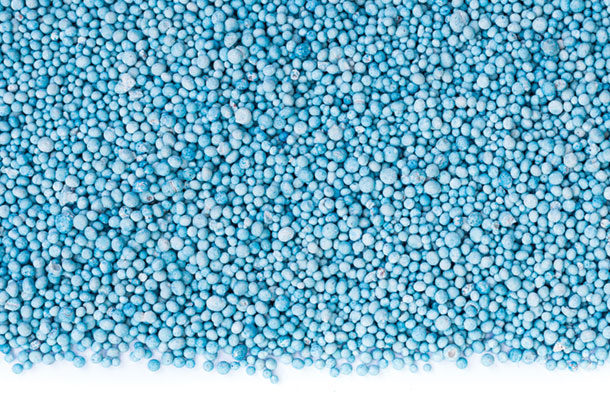This is not the case but, if applied incorrectly, up to 40 percent of nitrogen applied as urea can be vaporized and lost as a gas.
The key is to apply urea correctly by getting the fertilizer beneath the soil surface. This can be accomplished by tilling or irrigating urea into the soil or getting a rainfall event within three to four days. If the urea is in the ground, the ammonia gas will quickly combine with soil water to form ammonium hydroxide, which is stable and not subject to vaporization loss.
The worst way to apply urea is on the soil surface without incorporating it through tillage or irrigation and have hot temperatures and no rain for three to four days after application. If all these things happen, you can have urea losses of up to 40 percent, but 20 percent losses are more common.
It is generally thought 0.25 inch of rain or more is sufficient to minimize urea losses. Urea is lost when it reacts with water to form ammonium carbonate. Ammonium carbonate is unstable and breaks down into carbon dioxide and ammonia gas. The reason wet soil makes losses worse is twofold.
1. Applying urea to wet soil ensures the pellets dissolve almost instantly, and the urea is immediately subject to attack by the urease enzyme that causes the loss. If urea stays in pellet form, the enzyme cannot act upon it.
2. The urease enzyme responsible for the loss is more prevalent in wet soil than in dry soil. Heavy dew is not good enough to incorporate the urea into the soil. In fact, heavy dew is detrimental because it is almost never abundant enough to incorporate urea but causes the soil surface to be moist and enhances urea vaporization losses.
However, if the urea is on the soil surface when the breakdown occurs, the ammonia gas can be lost into the atmosphere. Urea losses can be greater if the soil has a high pH or is wet when urea is applied. The ammonium carbonate breakdown reaction is basic, and high pH drives the reaction to occur faster.
Temperature is important in estimating the amount of loss that may occur. The urease enzyme is much less active in cool weather than hot weather, which is why urea losses are very small in cooler temperatures and much larger in hot temperatures.
An exact temperature at which urea losses begin to occur is hard to pin down, but it is generally thought the temperature must be higher than 70ºF for a sustained period for losses to be severe. This means urea losses should be minor when topdressing winter annual pastures in late winter or when fertilizing perennial summer pastures or hay fields in early spring.
Several additives are sold that may or may not reduce urea losses. Most university research shows that products containing NBPT (N-[n-butyl] thiophosphoric triamide) can delay the onset of urea vaporization and give an additional 10 to 14 days to incorporate urea with tillage, irrigation or rainfall.
In closing, urea is an excellent nitrogen source if one has an understanding of how to use it (or better yet, an idea of how not to use it). Losses can occur if used incorrectly. It’s important to remember: All three things have to happen for substantial urea losses to occur; if you till in urea within three to four days, irrigate it into the soil, have rainfall or cool weather within that period, urea losses will be insignificant. ![]()
PHOTO: Fertilizer. Getty Images.

-
Eddie Funderburg
- Senior Soils and Crops Consultant
- Noble Research Institute
- Email Eddie Funderburg











